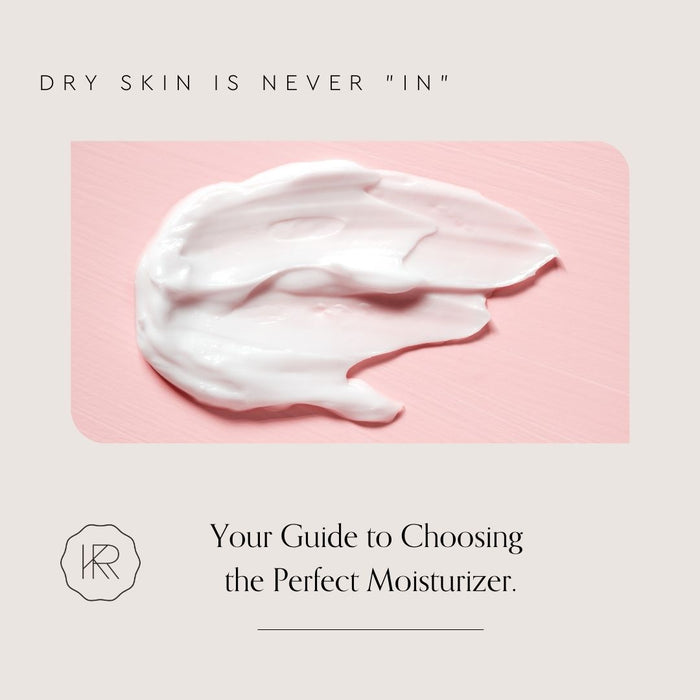Great news: there is a moisturizer that your skin will respond well to! However, even if you are a skin expert, finding your ideal moisturizer may take time, patience, and research…
With so many options, different skin types, ingredients you want and ingredients to avoid, and unfamiliar words, it can be difficult to find a moisturizer that works best for your skin and meets your requirements!
That’s the purpose of this article – we want to remove the stress and make it easier for you to choose a moisturizer that keeps your skin happy and healthy!
So, continue reading for simple definitions, the moisturizer type and ingredients that are best for each skin type, and trusted recommendations.
What are the different types of moisturizers?
There are a variety of options for hydrating skin products including moisturizers, lotions, creams, oils, and gels.
The words moisturizer, lotion, and cream are often used interchangeably, but they are not the same. In fact, lotions and creams (and oils and gels) are types of moisturizers.
Here is a breakdown of the most common types of moisturizers:
Lotions:
Lotions typically have a higher water content than creams and are easier to spread over a larger surface area and are also more easily absorbed. Lotions are often scented, which may be problematic for individuals with sensitive skin.
Creams:
Creams contain both oil and water and tend to be thicker so they take longer for the skin to absorb. Creams are best for skin hydration and nourishment as well as anti-aging.
Oils:
Oils are often used along with a different moisturizer that provides the water the skin needs. Oils, though, are beneficial because they are a natural source of vitamins and nutrients that provide the skin with hydration and long-lasting nourishment.
Gels:
Gels are lightweight, easily absorbed, non-greasy moisturizers that are great for oily skin and acne-prone skin because they are water-based and oil-free. Gels work better before applying makeup than some of the other types.
You may change your moisturizer based on your morning or evening skincare regimen, based on the season, or even based on what you think your skin needs on any particular day. So, your skin care routine could use a combination of the above moisturizing products – and that is okay!
What are the three types of moisturizing ingredients?
There are three main types of ingredients that you will find in moisturizing skincare products.
Emollients and occlusives are oil-based and humectants are water-based. They are often used together in formulas because they help hydrate and moisturize the skin in different ways.
Here are the three moisturizing ingredients:
Emollients
Emollients lube up the skin and make it smoother and softer. When dry skin causes open spaces between the cells in your skin, emollients fill the spaces with lipids, which leads to more soft and smooth skin.
Emollients are typically found in thick creams and ointments that are best for nighttime use. They can help improve, control, soothe skin conditions such as eczema, psoriasis, dermatitis, cracked skin, and more.
Lotions contain more water and less emollients so they are the least moisturizing, but may be effective for daytime use.
Common emollients are:
- Cocoa butter
- Lanolin
- Mineral oil
- Shea butter
- Ceramides
Emollients can be good for people with dry skin – and may not be the best choice for people with oily skin. You can apply emollients throughout the day, and rub it in slightly, but not all the way. With emollients, consistency is key to keeping dry skin moisturized!
Humectants
Humectants attract water, hold onto it, and use it to keep your skin hydrated. They pull water from the dermis (second layer of the skin) to the epidermis (top layer of skin) – and can also pull water from the air.
By helping shed dead skin cells, the skin becomes less flaky and is less likely to crack or chafe.
Humectants are found in gels, lotions, creams (with water listed as the first ingredient), serums, and cleansers, as well as other hair and beauty products.
The most common humectants include:
- Aloe vera
- Alpha-hydroxy acids (AHAs)
- Glycerin
- Hyaluronic acid
- Salicylic acid
Humectants can be used for dry and oily skin – but you’ll want to look at the ingredients to make sure it is okay for your skin type. For example, if you have oily skin, you’ll want to use a product that contains salicylic acid.
Occlusives
Occlusives are moisturizing agents that form a protective layer on the surface of the skin to help prevent moisture loss. The barrier seals water into the skin and also protects from friction, wind, and even pollen.
Great for extra dry skin, dehydrated skin, and skin that is inflamed, occlusives also help with skin aging, sun damage, and healing.
Common occlusive ingredients are:
- Oils
- Petrolatum
- Shea butter
- Silicones
- Waxes
Some occlusives, like shea butter, also act as emollients because they smooth and soften the skin.
Due to their thick and heavy consistency, occlusives are best for people with extra dry or dehydrated skin. Since they can clog pores and leave a greasy sheen, occlusives are not ideal for people with oily or combination skin.
What type of moisturizer is best for each skin type?
Now that you know about the types of moisturizers and the types of moisturizing ingredients, you are hopefully more ready to choose a skincare product that will promote the hydration you need that is best for your skin type. Did you know that your skin needs change as you age? As we age and hormone levels change, you'll likely find that the moisturizer that worked in your 20's, no longer provides the right level of hydration. The amount of oil that our skin produces decreases with age. Our skin's ability to retain moisture can also become compromised, making it even more important to supplement with the best ingredients.
Where you live and changes in season can also impact your moisturizer selection.
Combination Skin
For combination skin, we recommend using a natural humectant during the day and an emollient at night when needed. This will help address both the dry and oily parts of your skin.
In the morning, cleanse with Salicylic Cleanser to help your skin maintain balance with hydration and then apply Complete Daily Moisture to hydrate and protect your skin throughout the day.
In the evening, cleanse again with Salicylic Cleanser followed by Hyaluronic Acid Hydration Serum to protect, moisturize, and smooth the skin. This may be enough during warmer months, but when your skin is dry, apply Total Nutrition Night Repair Complex after the Hyaluronic Acid for powerful hydration (and anti-aging) benefits.
Oily Skin and Acne Prone Skin
Oily skin, in general, does best with natural humectants.
In the morning, a Salicylic Cleanser will keep your skin’s hydration in balance. After patting your skin dry, apply a lightweight, water-based lotion or gel moisturizer.
In the evening, cleanse again with Salicylic Cleanser followed by Hyaluronic Acid Hydration Serum. You may also want to add Total Nutrition Night Repair Complex after the Hyaluronic Acid for more hydration.
Dry Skin
Emollients are wonderful for keeping dry skin moisturized, smooth, and soft.
For your morning skincare routine, wash your face with an oil-based cleanser like Nutritive Oil Cleanser and Makeup Remover and then use Complete Daily Moisture to hydrate and protect your skin.
At night, wash your face again with Nutritive Oil Cleanser and Makeup Remover. When your skin is still damp, apply Revitalizing Intensive Daily Moisture.
When your face or body needs an extra boost of moisture, apply Botanical Body Oil Blend for a healthy, anti-aging moisturizer.
Super Dry Skin
Occlusives are ideal for extra dry skin. The thick consistency protects the surface of the skin – and keeps the skin from losing water.
The skincare routine is similar to what we recommend for people with dry skin. In addition to the products mentioned above, for super dry skin, we suggest applying Epidermal Growth Factor (EGF) Skin Rejuvenation Serum once a day.
Make sure to let EGF Serum absorb in the skin before you apply other serums or moisturizer. EGF Serum helps extra dry skin by boosting cell turnover, enhancing recovery, and reinforcing protective mechanisms to promote smooth, soft skin.
Sensitive Skin
If you have sensitive skin, you’ll want to review the ingredients of lotions in particular, which tend to include fragrances and other components that may cause a reaction.
It is also important to test all new products on a small part of your arm before you try them on your face! (This is good advice regardless of your skin type!)
For your morning skin care routine, start by washing with a gentle cleanser like Nutritive Oil Cleanser and Makeup Remover and then apply Hyaluronic Acid Hydration Serum.
For your evening skin care routine, wash with Nutritive Oil Cleanser and Makeup Remover and while your skin is slightly damp, apply Revitalizing Intensive Daily Moisture.
Botanical Body Oil Blend works well on sensitive skin, so if your face or body need more moisturizing, this is a great product to try!
How to Choose a Moisturizer
Now that you have some information about the types of moisturizers, the three types of ingredients in moisturizers, and the moisturizers that are best for each skin type, choosing a product (or products) for your skin won’t be as stressful!
Just follow these 3 steps to choose a moisturizer that is good for your skin:
- Determine your skin type.
- Review the recommendations above based on your skin type.
- Search for products – and review ingredients!
Take time to find the products that are best for your skin. Bookmark this article to use as a reference when shopping for skincare products. Look at the ingredients; search for the ingredients that you don’t know – and make sure they are safe for your skin.
We offered suggestions for products for each skin type, but if you have additional questions or if you are wondering what serums will partner well together, please send us an email!
Our hope is that through this article, you find some relief for your dry, winter skin!




